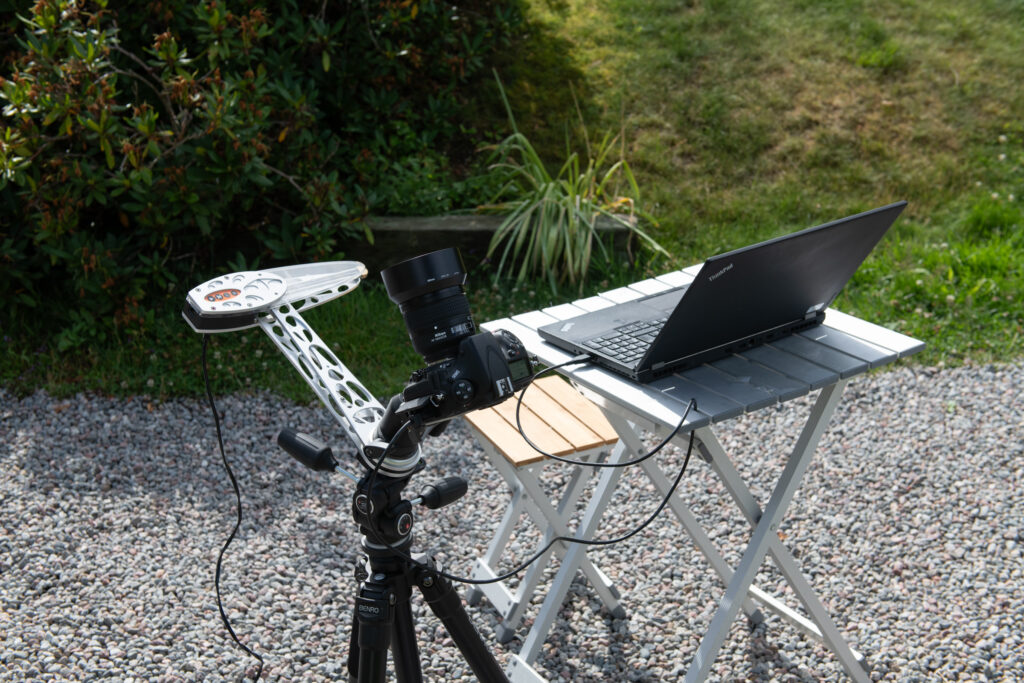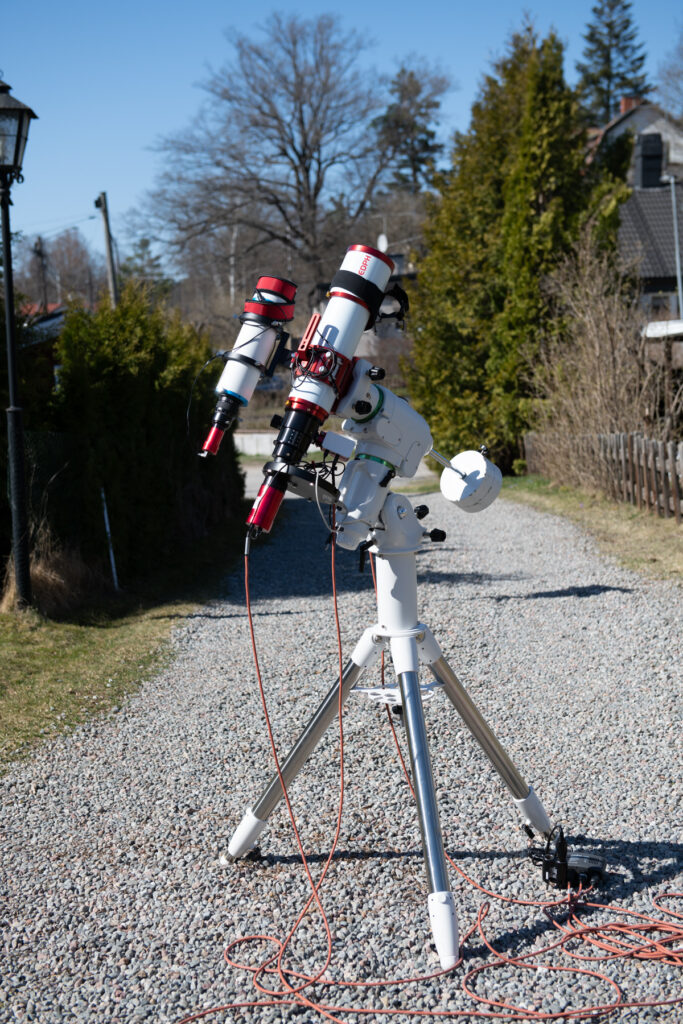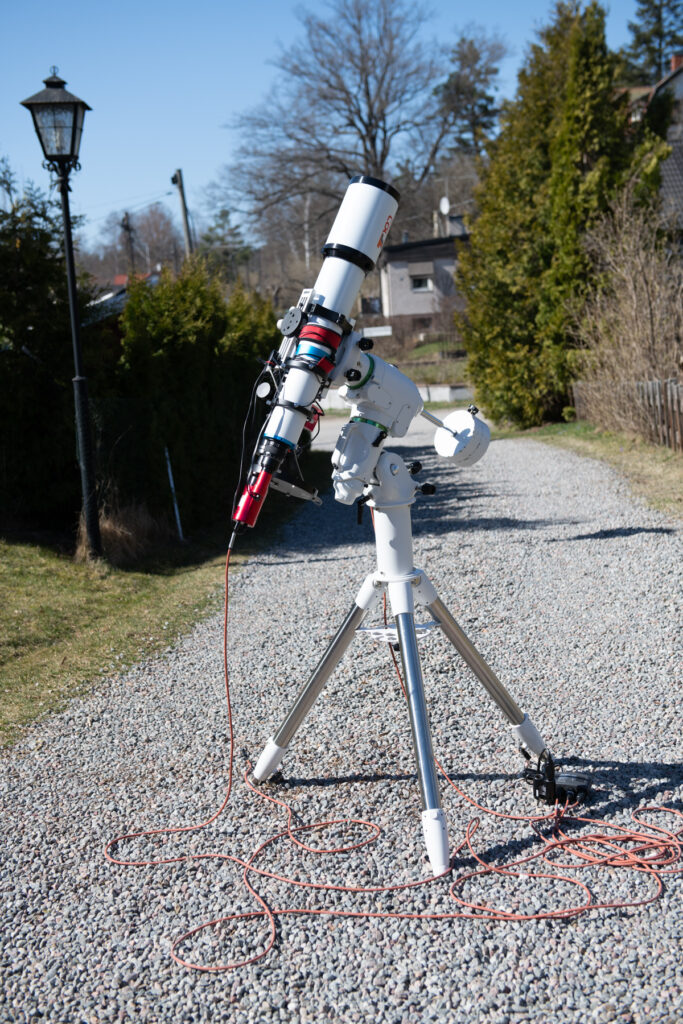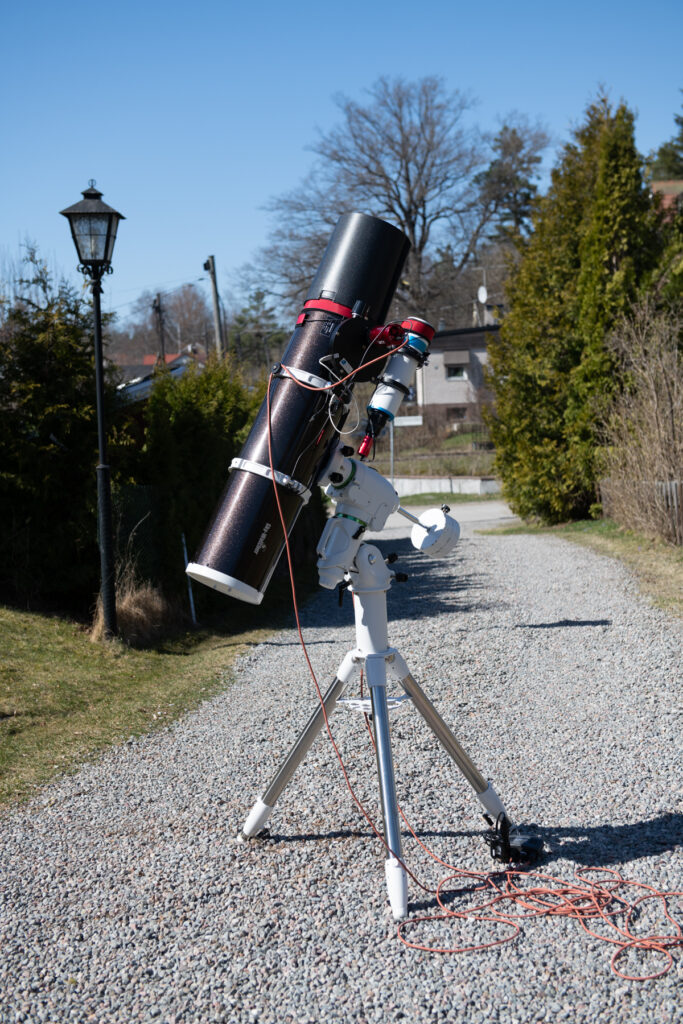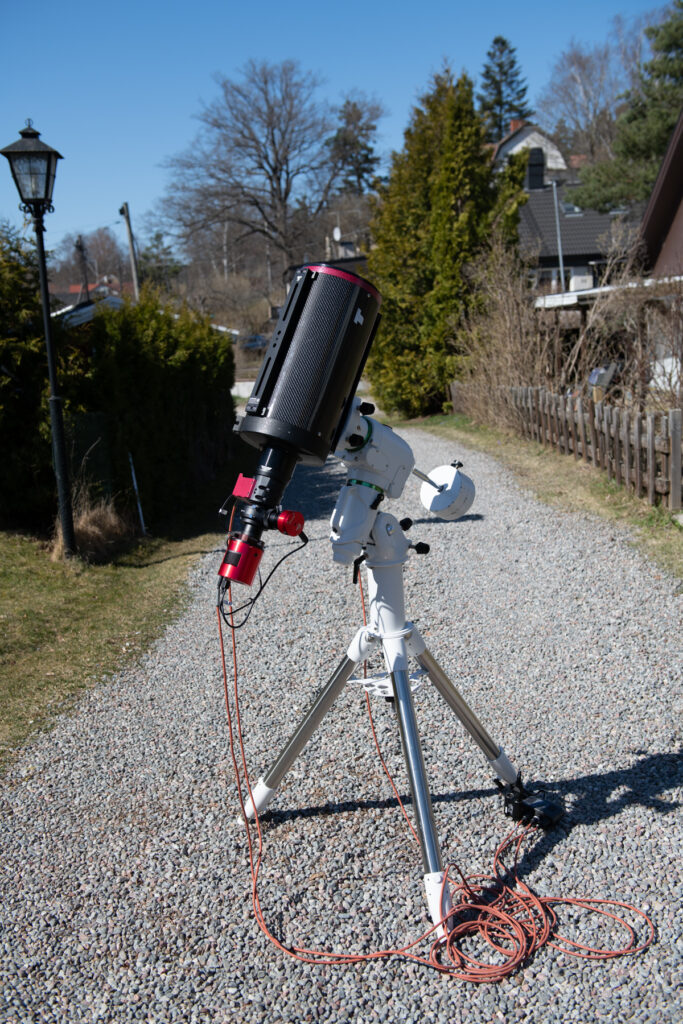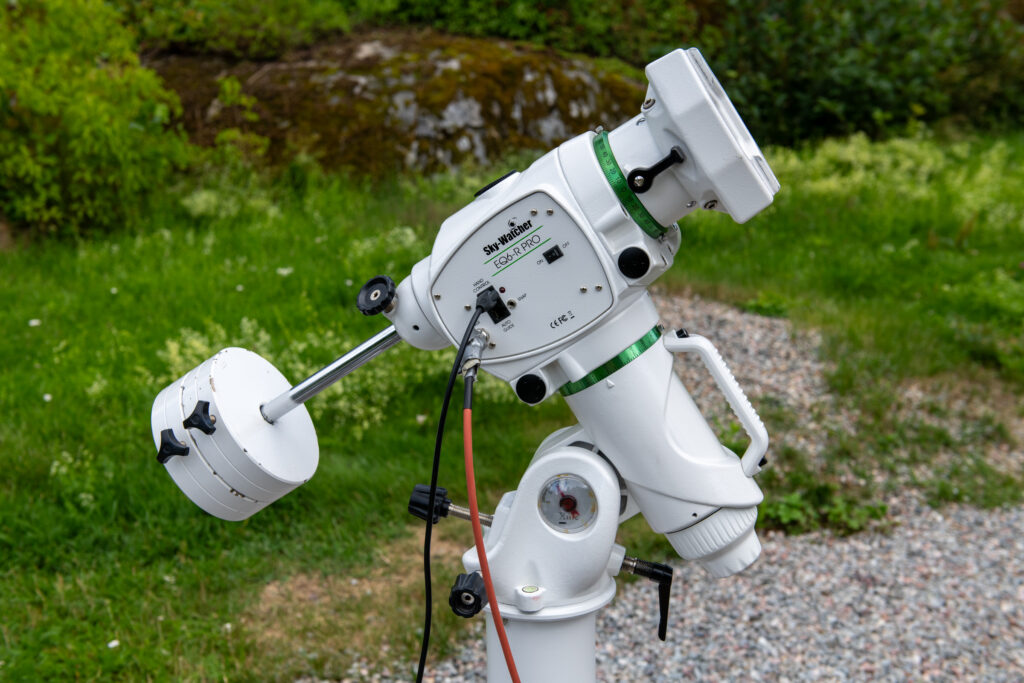Depending on what target I want to photograph or view I use one of my four telescopes with focal lengths of 414mm, 700mm, 1000mm and 1624mm. Using various adapters I can use either a Nikon D800 DSLR camera, an Atik 360EX monochrome CCD camera, or a ZWO ASI 2600MC color CMOS camera with each of the telescopes. For planetary photo with the longer focal lenght telescopes, I am also using a ZWO ASI120MC color CMOS camera.
Most of the photos shown on this site have been taken by telescopes carrired by a Skywatcher EQ6-R Pro equatorial mount, which is controlled by EQMOD and ASCOM drivers in a standard Windows PC. I have recently also acquired a ZWO AM5N harmonic drive mount, which has been used for some of the latest photos. The Windows PC runs the main control program for image capture – Sequence Generator Pro from Main Sequence Software – as well as the guiding program PHD2 and the necessary drivers for the motorised focusers I am using. Separate cameras are used for the autoguiding, either the ZWO ASI 190MM Mini and an 80 mm guidescope or an Off Axis Guider (OAG), or the ZWO ASI 432MM and an OAG.
I am also using the Nikon D800 DSLR camera and Nikon lenses with focal lenghts between 14mm and 200mm to capture wider starfields and the Milky Way. The camera is then mounted on a tripod with an Astrotracker that compensates for the rotation of the Earth during longer exposures.
Here are more detailed descriptions of some of the configurations I am currently using.
AstroTrac TT320X astrotracker and Nikon D800 full frame DSLR camera with lenses with focal lengths from 14mm to 200mm.
This compact and lightweight configuration is my favourite for taking starscapes and wide field images of e.g. the Milky Way.
Askar 94EDPH 7-element, flatfield apochromatic refractor telescope with 94 mm aperture, f/4,4, and focal length 414mm (APO94)
This telescope is ideal for wide field photography of large deep sky objects such as the Andromeda galaxy and Orion nebula.
TS-Optics Photoline Triplet FPL53 apochromatic refractor telescope with 107 mm aperture, f/7, and focal length 700mm (APO107).
This telescope is an allround workhorse for galaxies, nebulas and star clusters of all types.
Skywatcher Explorer MN 190mm, f/5,3, Maksutov Newtonian reflector telescope with focal length 1000mm (MN190)
In combination with the 360EX CCD camera this telescope is an excellent tool for capturing remote galaxies. This is also the telescope I have used to capture the planetary images. Thanks to its fast aperture, I am also using it for visual observations.
TS-Optics GSO 8″, f/8 Ritchey-Chretien Pro RC Reflector Teleskop with carbon tube and focal length 1624mm. (RC8)
I am primarily using this telescope together with the ASI 2600MC color camera to capture galaxies and galaxy clusters.
Most of the photos from 2018 and up to the end of 2024 have been taken with the telescopes carried by a Skywatcher EQ6-R Pro equatorial mount.
The mount is controlled by a Windows PC and can easily carry weights up to 15kg in astrophoto applications. Using autoguiding i normally achieve drift errors of less than one arcsecond.
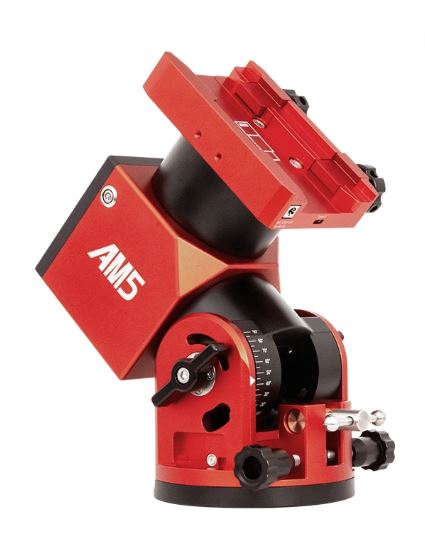
In the end of 2024 I started to use a ZWO AM5N harmonic drive mount and a carbon fiber tripod to reduce the mount weight. This mount and tripod, including extension pier, weighs only about 10 kg but can carry telescopes weighing up to 15 kg, even up to 20 kg using a counterweight.
The mount is controlled by a Windows PC and using autoguiding I normally achieve drift errors of less than half an arcsecond.
I started out in visual astronomy back in 2014, using the fairly large Celestron CPC 925 reflector telescope. After some experimentation I added a wedge to the azimutal mount, converting it into an equatorial mount which I used together with my Nikon D800 DSLR camera for astrophotgraphy. Adding an off-axis guider (OAG) improved the quality of the pictures, but the mount was not ideal – too heavy – so I sold off the equipment in 2016 and started over again with the APO 107 mm refractor and an equatorial mount.
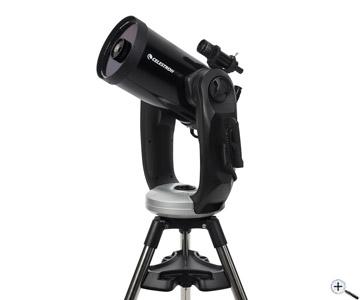
Celestron CPC 925, 2350mm, f10 Schmidt-Cassegrain Reflector Telescope
This reflector telescope had a large aperure and an azimutal GoTo-mount which was good for visual astronomy. However, it is not possible to take good astrophotos with an azimutal mount, so I used a quite heavy wedge to enable parallactic operation of the mount. The telescope and mount was sold in 2016.
When shifting to an equatorial mount in 2016, I first bought and used the Celestron AVX GoTo mount.
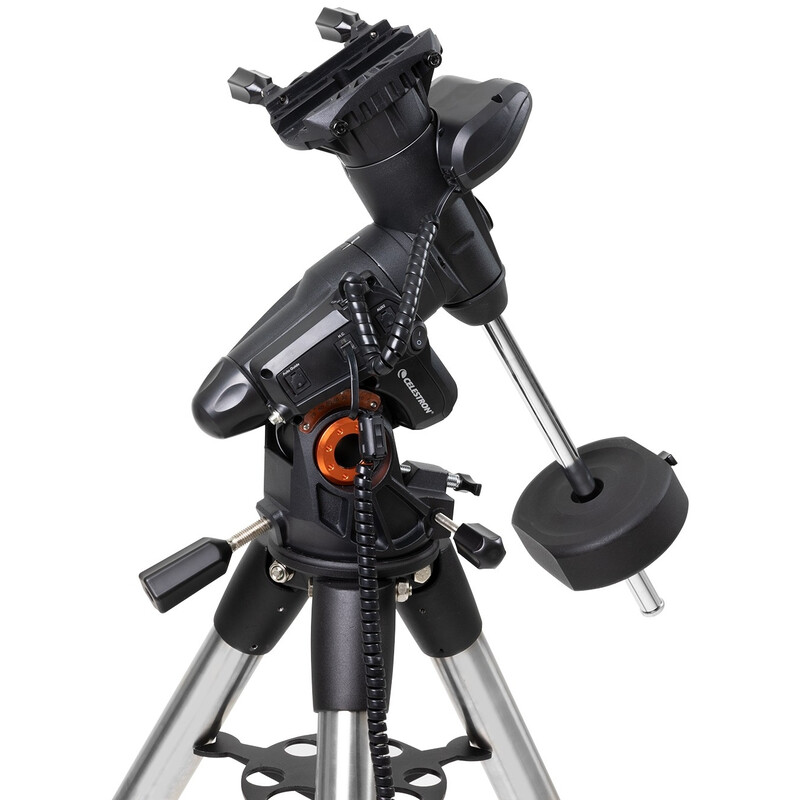
I used this mount a couple of years, but it was not up to the standards I was striving for and in 2018 I replaced it with a sturdier Skywatcher EQ6R equatorial mount.
